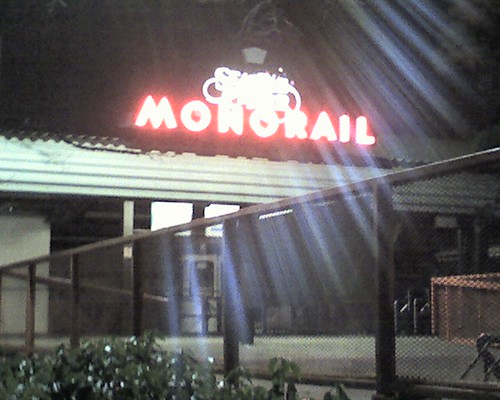So stipulated: Library OPACS, uh, lack the functionality we desire. We're all agreed. OPACS should be much, much better.
Here's my question: How does the quality of the OPAC ultimately affect the total quality of customer experience and customer satisfaction? I think the answer to that question may be quite different from library to library, depending on the needs of our different user populations. Public library users may be more inclined to be browsers, and may not really care that much about how good the OPAC is. Academic, school and special library users may be more inclined to search for specific titles, or titles within specified subject areas, and may therefore care more about the quality of the OPAC.
But even in libraries where customers rely heavily on the OPAC, I'm not sure that the quality of the OPAC figures that greatly into the customers' overall satisfaction. (I suspect it often doesn't…) I worked in a small special library that had a truly awful, terrible OPAC. It was one of them home-grown government agency deals--ugh! But our small, dedicated staff gave great customer service, did a lot of outreach, offered a good deal of training, and our user satisfaction was quite high. While I'm sure our users really would have valued a better OPAC, their overall library experience was not greatly affected. If we instead had offered a really super-great OPAC, but lousy customer service, I don't think our users would have been quite so satisfied…
In
Seven Habits of Highly Effective People, Stephen Covey suggests that we are most effective when we focus our energy at those points where our concerns intersect with our ability to influence. Clearly the OPAC falls into our collective sphere of concern. But I'm not sure how much influence we have over the quality of the OPAC. I'm not suggesting that we don't
try to influence the quality of the OPAC -- by working with vendors, creating our own systems, or a combination of both. I'm truly thankful that John Blyberg and Casey Bisson are out there. But I do think that for many libraries, or
more perhaps I should say for many
librarians, we may be able to get more bang for our limited buck, more return on the investment of our time and resources, by focusing our energies elsewhere.
I'd like to see libraries looking at their own spheres of concern and influence and making critical choices about where
their time, energy, and resources can best be used to improve the quality of customer experience. In many cases, I suspect that we can have a much greater impact on customer experience by focusing on (in no particular order) the quality of the library's environment ("library-as-place"), the library's customer service, the library's webpage, the library's collection, the library's programs, the library's outreach, and the library's marketing (they can't experience us if they don't know about us.)
I'm particularly interested in how libraries can create better customer experiences and be more relevant to their user populations by improving their physical environments. How do our customers experience the actual library space including, the visual (displays, colors, lighting, layout), the tactile (comfy furniture) the olfactory (yum… coffee…), and the aural (zones of quiet, zones of noise, background music)? How does the library staff improve the quality of the environment? Are they warm, friendly, and hospitable? Are they visible? Are they proactive and helpful?
As Joshua Neff recently pointed out, I'm not the only one thinking about these things. Meredith Farkas, (in a must-read, smart, sensitive, insightful, and mostly-polite post) says that she doesn't use her library because she, "found the whole atmosphere really unwelcoming." Nicole Engard found that her local librarians "were not very approachable, knowledgeable, or friendly." Jennifer Macaulay , "admits" that she's not a library user either (and how many of us would "admit" the same?)
Now how many of you don't use your library because the OPAC sucks? Just wondering.
Labels: Customer Experience, Library as Place, OPAC, Peter







